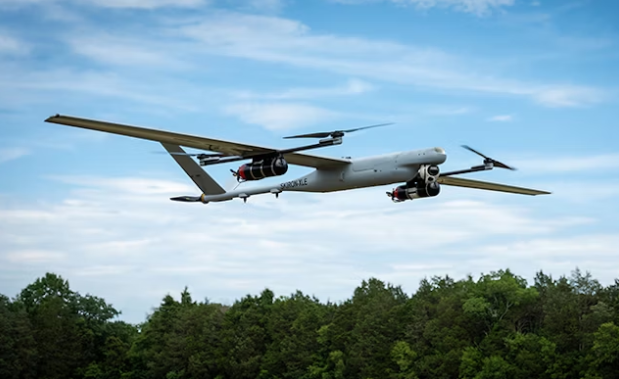Boeing’s Hydrogen-Powered SKIRON-XLE Drone Completes 7-Hour Flight

Aurora Flight Sciences, a Boeing subsidiary, has completed a seven-hour test flight with the SKIRON-XLE, a small drone powered by a hydrogen fuel cell. The test flight took place at an airfield in Virginia, making a significant advancement in flight endurance for Group 2 drones.
The SKIRON-XLE drone is designed for long-range surveillance missions and is a part of the firm’s small uncrewed aircraft system (sUAS) lineup, including the battery-powered SKIRON-X model with 3.5-hour flight endurance.
The drone combines electric vertical takeoff and landing capabilities with fixed-wing horizontal flight. It complies with FAA Part 107 standards for UAS operations and is ready for beyond visual line of sight (BVLOS) flight.
The FAA requires any drone or uncrewed aircraft flown in the U.S. to perform operations within the operator’s visual line of sight. However, it can apply for BVLOS approval to allow the drone to be flown at bigger distances. The FAA passes BVLOS approval on a case-by-case basis.
For this flight, the SKIRON-XLE is equipped with two five-liter hydrogen tanks, an Intelligent Energy fuel cell, a Trillium HD45 EO/IR camera, and a Lithium Polymer (LiPo) auxiliary battery. Total takeoff weight was 54 pounds. The drone landed at 7.0 hours with its hydrogen fuel tanks depleted ample while maintaining a sufficient safety margin in its battery.
The drone is deployed by two crews and is easily transported in a standard truck or SUV thanks to its lightweight design.
According to Senior Director of Products at Aurora Flight Sciences Jason Grzywna, the SKIRON-XLE not only achieves longer flight durations but also being easy to use and deploy. In addition, it can also unlock the longer flight times customers demand.
First announced in June 2024, the SKIRON-XLE not only features three payload mounting locations, including the nose, belly, and underwing but also offers custom payload integration.
The ground control station for the drone is equipped with Kutta Technologies’ Unified Ground Control Station (UGCS) software, and a 2.4G 10W radio with a tracking antenna allowing a control range of up to 75 km.
The SKIRON-X line is adept in a variety of use cases, such as ISR missions, BVLOS missions, or firefighting. It is also suitable for research and development about autonomous technologies and multi-vehicle unpiloted operations.
SKIRON-XLE is expected to be delivered in early 2025.

 Tech Steel & Materials
Tech Steel & Materials
Comments are closed